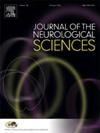Neuroimaging patterns in patients with mitochondrial leukoencephalopathies
IF 3.2
3区 医学
Q1 CLINICAL NEUROLOGY
引用次数: 0
Abstract
Background and objectives
Leukoencephalopathies are characterized by white matter (WM) abnormalities and include various primary mitochondrial diseases (MD) that impact mitochondrial function across all neuroglial cells. Understanding these associations is vital for effective clinical management.
Methods
We performed a retrospective analysis of patients with genetically confirmed MD who exhibited white matter abnormalities at a pediatric academic medical center. Data were obtained through medical record reviews, collecting information on demographics, genetic etiology, features of WM involvement, and other areas such as the basal ganglia, cortex, cerebellum, and spine on MRI. Biomarkers like CSF protein and plasma lactate levels were also recorded. Statistical analysis was conducted using R version 4.4.1 to assess significance of specific MRI features in relation to nuclear vs. mitochondrial DNA.
Results
Among 192 MD patients, 142 had available neuroimaging. Of these, 43 (30 %) patients with a median age of 15.5 months exhibited WM involvement, with 53.4 % being female. The most common findings were periventricular (32 %), diffuse (42 %), and multifocal (17 %) WM lesions, with corpus callosum involvement in 51 % of cases. Distinct patterns observed included cystic changes (19 %), diffusion restriction (42 %), and white matter volume loss (40 %). Genetic analysis revealed a diverse range of mutations affecting mtDNA (30 %) and nDNA (70 %) genes.
Discussion
Our study highlights specific neuroimaging patterns associated with leukoencephalopathies in MD. For example, periventricular involvement in MTRFR mutations and diffuse abnormalities in FBXL4 mutations reflect the variability of WM manifestations. These findings can help clinicians identify the genetic etiology in this patient cohort.
线粒体白质脑病患者的神经影像学特征
背景和目的白质脑病以白质(WM)异常为特征,包括各种影响所有神经胶质细胞线粒体功能的原发性线粒体疾病(MD)。了解这些关联对于有效的临床管理至关重要。方法回顾性分析在儿科学术医学中心确诊的MD患者的白质异常。数据通过病历回顾获得,收集人口统计学信息、遗传病因、WM累及的特征,以及MRI上的其他区域,如基底节区、皮层、小脑和脊柱。同时记录脑脊液蛋白和血浆乳酸水平等生物标志物。使用R版本4.4.1进行统计分析,以评估核与线粒体DNA相关的特定MRI特征的意义。结果192例MD患者中,142例有神经影像学检查。其中,43例(30%)患者的中位年龄为15.5个月,表现为WM受累,其中53.4%为女性。最常见的表现是脑室周围(32%)、弥漫性(42%)和多灶性(17%)WM病变,51%的病例累及胼胝体。观察到的不同类型包括囊性改变(19%)、扩散受限(42%)和白质体积损失(40%)。遗传分析显示影响mtDNA(30%)和nDNA(70%)基因的多种突变。我们的研究强调了与MD白质脑病相关的特定神经影像学模式。例如,MTRFR突变累及脑室周围和FBXL4突变的弥漫性异常反映了WM表现的可变性。这些发现可以帮助临床医生确定该患者队列的遗传病因。
本文章由计算机程序翻译,如有差异,请以英文原文为准。
求助全文
约1分钟内获得全文
求助全文
来源期刊

Journal of the Neurological Sciences
医学-临床神经学
CiteScore
7.60
自引率
2.30%
发文量
313
审稿时长
22 days
期刊介绍:
The Journal of the Neurological Sciences provides a medium for the prompt publication of original articles in neurology and neuroscience from around the world. JNS places special emphasis on articles that: 1) provide guidance to clinicians around the world (Best Practices, Global Neurology); 2) report cutting-edge science related to neurology (Basic and Translational Sciences); 3) educate readers about relevant and practical clinical outcomes in neurology (Outcomes Research); and 4) summarize or editorialize the current state of the literature (Reviews, Commentaries, and Editorials).
JNS accepts most types of manuscripts for consideration including original research papers, short communications, reviews, book reviews, letters to the Editor, opinions and editorials. Topics considered will be from neurology-related fields that are of interest to practicing physicians around the world. Examples include neuromuscular diseases, demyelination, atrophies, dementia, neoplasms, infections, epilepsies, disturbances of consciousness, stroke and cerebral circulation, growth and development, plasticity and intermediary metabolism.
 求助内容:
求助内容: 应助结果提醒方式:
应助结果提醒方式:


